Cameras and lenses of 9 Aussie titles released in 2019
Cinematographers from Australian films, television, documentary and online series share the camera and lens choices that brought the stories to life.
In 2019, Australian audiences were taken from the vibrant Top End, to post-apocalyptic cities, the swinging 60s and everything in between.
Each of these projects had their own unique look, brought together by a variety of factors including the choice of cameras and lenses.
Across these examples the ARRI cameras feature heavily, particularly the ALEXA Mini – used as both as a main camera or for additional filming where its smaller, lighter frame was required. The Panasonic Varicam 35 and several RED cameras also appear several times. Hear from cinematographers themselves about why they chose these cameras, and why paired with specific lens choices they were able to create the unique look and tone of each project.
Not from the camera department? We’ve put a cheat sheet of terms at the bottom of this story.
All of the projects received Screen Australia funding.
(In alphabetical order)
Cinematographer: Bonnie Elliott ACS
Director: Ana Kokkinos, Sophie Hyde
Filmed on ARRI ALEXA Mini with Zeiss Super Speeds and Angenieux Optimo zooms
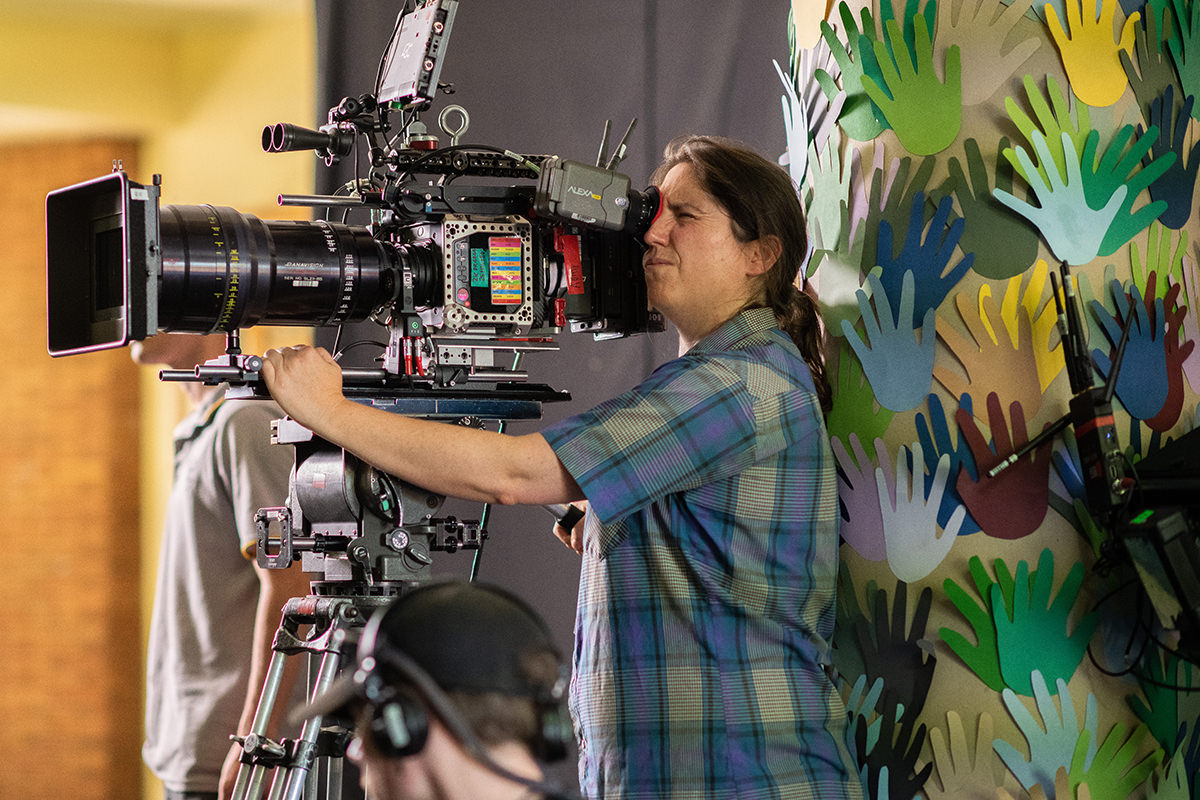 Bonnie Elliott ACS on the set of The Hunting (Photo credit Nat Rogers)
Bonnie Elliott ACS on the set of The Hunting (Photo credit Nat Rogers)
SBS’s highest-rated drama commission ever, The Hunting follows the lives of four teenagers, their teachers, families and community in the aftermath of a nude teen photo scandal. The four-part drama series Asher Keddie, Richard Roxburgh, Sam Reid and Jessica De Gouw alongside an impressive cast of new and emerging faces.
Bonnie Elliott ACS: The Hunting is an intimate, performance based show, so director Ana Kokkinos and I wanted to have a fluid and responsive camera style, utilising both handheld cameras and Steadicam, to move with the characters and really feel their experience and emotions. I chose the ARRI Mini because it is such a flexible camera and can be changed between these modes quickly. It’s also very good for squeezing into tight spaces like teenager’s bedrooms! I love the ARRI sensor for its beautiful skin tones, low light sensitivity and pleasing highlight roll off.
Both H is for Happiness [coming to cinemas in February 2020] and Palm Beach were also shot on the ARRI Mini camera, for the same reasons of sensor performance, and versatility of configuration. In many ways I feel the biggest decision a cinematographer makes with their kit these days is lens selection.
For lenses on The Hunting I turned to my trusty favourites, Zeiss Super Speeds, which deliver a good amount of character to the digital image, especially around flares, but maintain a quality of visual honesty. I wanted to visually separate public and private spaces in the show through modulating the depth of field, so that as we retreated to the vulnerability of the homes and bedrooms I shot closer to wide open so that the image becomes less defined and more tactile, like a tender caress of the face. As we move out into the schools and classrooms the depth increases so that we see the world around our characters, the pressure of it, the eyes following them as they walk down a corridor.
Our cast included many young actors, some of them first timers, so for our ambitious days in the classrooms I embraced Angenieux short zooms so that we could move quickly into a tighter size without a lens change, to keep the momentum going on set. These zooms are a good match for the Super Speeds, and I ran a light glimmer glass filter across the show to glue them together a little more.
The first episode opens with a sexually charged video chat between two teenagers and it was vital this felt totally authentic, given that communication through phones and screens is such a central theme of the series. We captured this scene via laptops running to an HD recording device from Black Magic, so that we used the real perspective of their laptop cameras, and meant the actors were able to perform to each other, in real time through the screens. The genuine compression artefacts from Skype gave the scene a texture that you can never quite match in post.
Watch The Hunting on SBS On Demand.
Cinematographer: Stefan Duscio ACS
Director: Mirrah Foulkes
Filmed on ARRI ALEXA XT and ARRI ALEXA Mini with Panavision B and C series anamorphic lenses
A blackly comic feminist take on the 17th century puppet show, Judy & Punch also marks Mirrah Foulkes directorial debut. It stars Mia Wasikowska and Damon Herriman as puppeteers Judy and Punch who are trying to resurrect their marionette show when Punch’s drive for ambition and drinking lead to a tragedy that Judy wants to avenge.
Stefan Duscio ACS: The look that Mirrah and I were trying to achieve with Judy & Punch was something very much set hundreds of years ago with an authentic texture and light to the film. We initially wanted to shoot it on celluloid, on film, but when that didn’t become an option we looked into the next best thing for us, which was the oldest lenses we were able to find: Panavision B series anamorphic lenses, which have been around since the 1960s. I’d also been doing a lot of research on a company called LiveGrain from the USA, who specialised in a very authentic looking film texture and grain that could be applied to digital images and I felt the combination of that lens and grain package, while also being shot on a modern camera like the ARRI ALEXA, really helped give it a texture and feeling like these images could have been captured hundreds of years ago, we hope. That in combination with trying to only light with candlelight whenever possible, or daylight whenever possible, we hope that gave it that feeling.
Watch an interview with Stefan Duscio ACS here
Cinematographer: Nicola Daley ACS
Director: Trent O'Donnell, Amanda Brotchie, Alison Bell, Sarah Scheller
Filmed on Panasonic Varicam 35 with Panavision Primos, 19-90 T2.8 Primo zoom, 11:1 Primo zoom and Tiffen Black Satin filters.
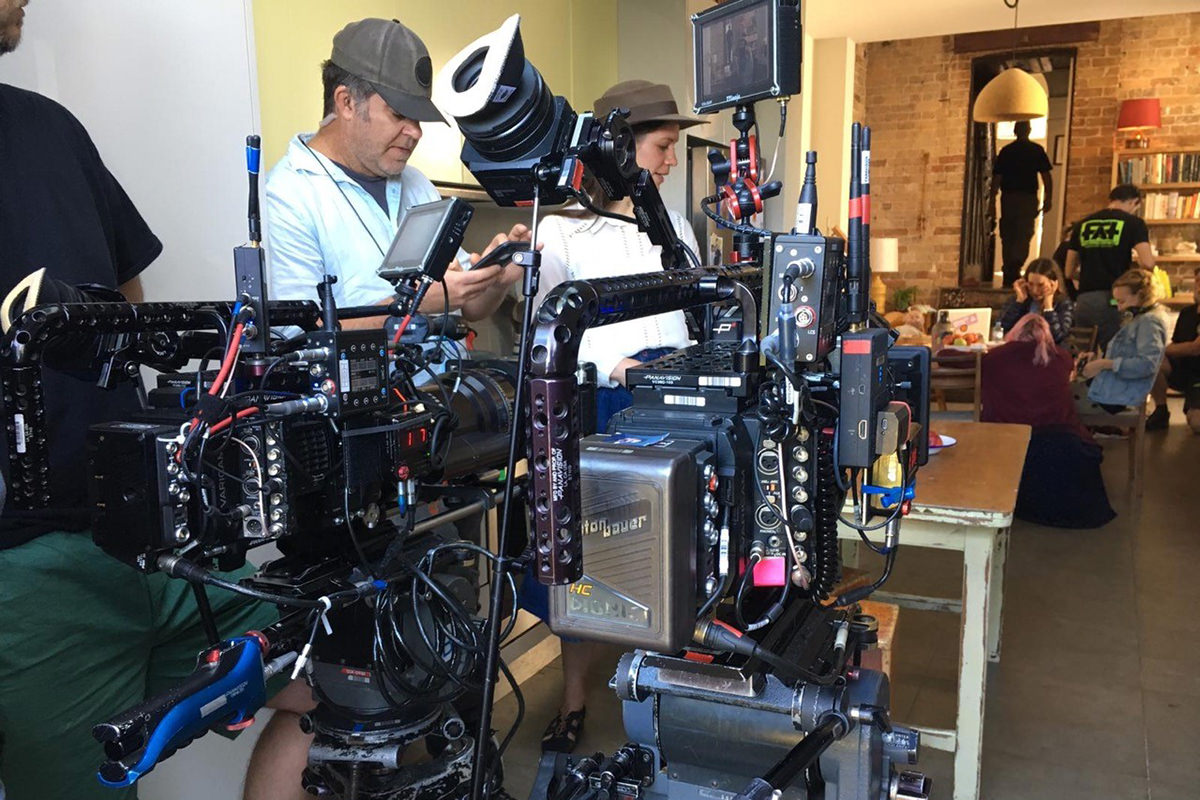 Nicola Daley ACS on the set of The Letdown series 2 (Photo credit Jason Henwood)
Nicola Daley ACS on the set of The Letdown series 2 (Photo credit Jason Henwood)
In the second season of this hit comedy created and written by Sarah Scheller and Alison Bell, parents Audrey and Jeremy (Alison Bell and Duncan Fellows) are past the new baby phase, but are now confronting a whole new barrage of challenges. It won Best Comedy Program and Best Performance in a TV Comedy at the 2019 AACTA Awards.
Nicola Daley ACS: For The Letdown series 2 I chose to use the Panasonic Varicam 35. Netflix required us to shoot at 4K. I did extensive testing in London at Panavision before we shot the series and I was really impressed with the skin tones and the ability to use a high ISO, which I knew would quickly get me out of some situations on a low budget comedy! The camera has dual native ISO of 800 and 5000. We had a long scene in our final episode all lit by candle light and so I knew the 5000 ISO would come in very handy. It was a very important scene in the series and was essentially taking place at a dancing in the ‘dark’ event, but of course there has to be enough light to be able to ‘see’ what is happening to our cast. It was a balancing act. We decided on candlelight and some back lights which my lighting team rigged in the ceiling of the church hall.
We shot The Letdown on two cameras most of the time - the only time we didn’t is when we couldn’t fit two crews into the small space we were shooting in! The Varicam 35 was a great camera, and the images graded up very nicely in post. In The Letdown we are primarily concerned with faces and I thought the images from the Panasonic Varicam 35 really did a great job of rendering skintones. The lenses I chose to use were the Panavision Primos and the 19-90 T2.8 Primo zoom which we used a lot as we wanted to move fast. We were shooting a lot of pages a day with babies - which is not always the easiest thing to do! We also had in our arsenal the 11:1 Primo zoom. The Primo lenses have a beautiful quality and you can rent a whole matching set of primes and zooms from Panavision, but I did want to soften the image further so I utilised the Tiffen Black Satin filters. I wanted the series to have a soft yet cinematic look, utilising a smaller depth of field than is maybe conventional in comedy, but I did not want to compromise the performances in any way.
Watch Season 1 of The Letdown on Netflix. Following its run on ABC iview, series 2 is set to screen on Netflix in Australia in the coming months – follow their Facebook page for updates and watch the trailer here.
Cinematographers: Jon Shaw ACS (underwater), Ben Cunningham, Mark Payne Gill, Wade Fairley, Paul Bell, Ralph Bower, Dan Proud (aerial), Peter Nearhos (macro)
Director: Tosca Looby
Filmed on a combination of RED Dragons, Phantoms, the ARRI ALEXA and F5, depending on whether the team were underwater, in low light, or needing light or heavy rigs. More on lenses below.
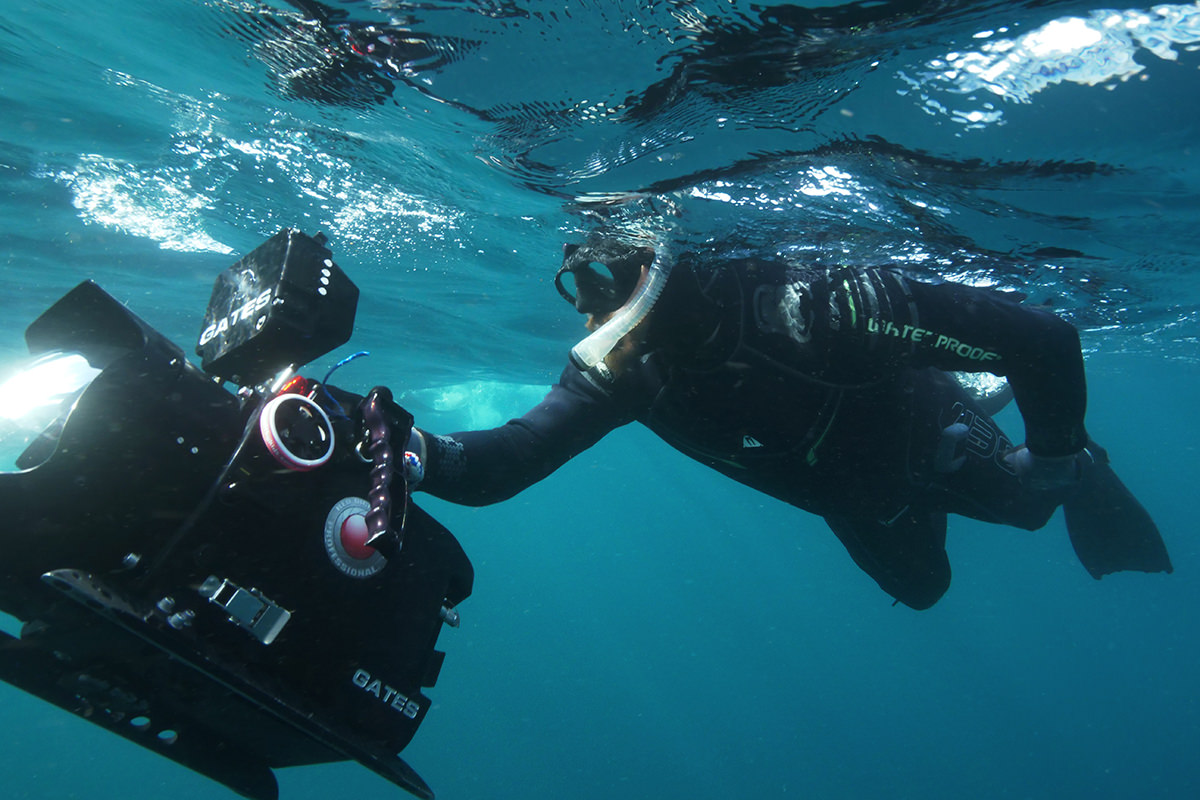 Jon Shaw filming The Magical Land of Oz
Jon Shaw filming The Magical Land of Oz
AACTA Award-winning natural history series Magical Land of Oz looks at the incredible variety of wildlife that thrive and survive across Australia, from the peaks of icy mountains, to the sun scorched deserts and swirling seas. The ABC series was the highest-rated Screen Australia funded documentary of 2019.
The series required the skills of eight different cinematographers to bring it to life, which producer Karina Holden says is reflective of the genre. “Natural History DPs are often specialist in certain fields, so to ensure the best footage we used the best people for each individual story. We also needed to work across the continent and needed people who were in familiar with remote and difficult locations, so there was a lot of factors of fitting stories with the appropriate people. Continuity came in the form of our wonderful series director, Tosca Looby.”
Underwater cinematographer Jon Shaw, explained the specific cameras and lenses he used for the episode Oceans (which won the AACTA Award for Best Cinematography in a Documentary).
Jon Shaw ACS: So for the Oceans episode which I shot a fair amount of, I used a RED in a Gates underwater housing. The REDs are great due to the small size, high resolution and ability to change frame rates easily.
Regarding lenses I used mostly stills glass as they’re compact and a lot of the advantages of cine lens don’t really apply underwater, for example breathing of the lens and long focus throw. My go-to lenses are the Canon 8-15 FE lens for shooting large animals and in poor visibility it works really well. I used this a fair amount on the whale shark sequences. Meanwhile the 16-35 is a nice go-to wide zoom lens for all round use, for example on the spider crabs and cuttlefish. And finally another lens that I like is a Sigma lens which is a 17-70 macro, which is wide enough to get establishing shots but then to be able to punch into the 70mm end for semi macro is great. The last lens I use a lot is a Zeiss 15mm prime which is really sharp and beautiful.
Catch up on Magical Land of Oz on ABC iview.
Cinematographer: Kathy Chambers ACS
Director: Fiona Banks, Kevin Carlin, Lynn Hegarty
Filmed on 2 x ARRI ALEXA XT’s and 1 x ARRI ALEXA Mini @2K with 2 x 24-275 Panavision Primo Zooms, 1 x 19-90 Panavision Primo Zoom, 1 x full set Panavision Primo Primes.
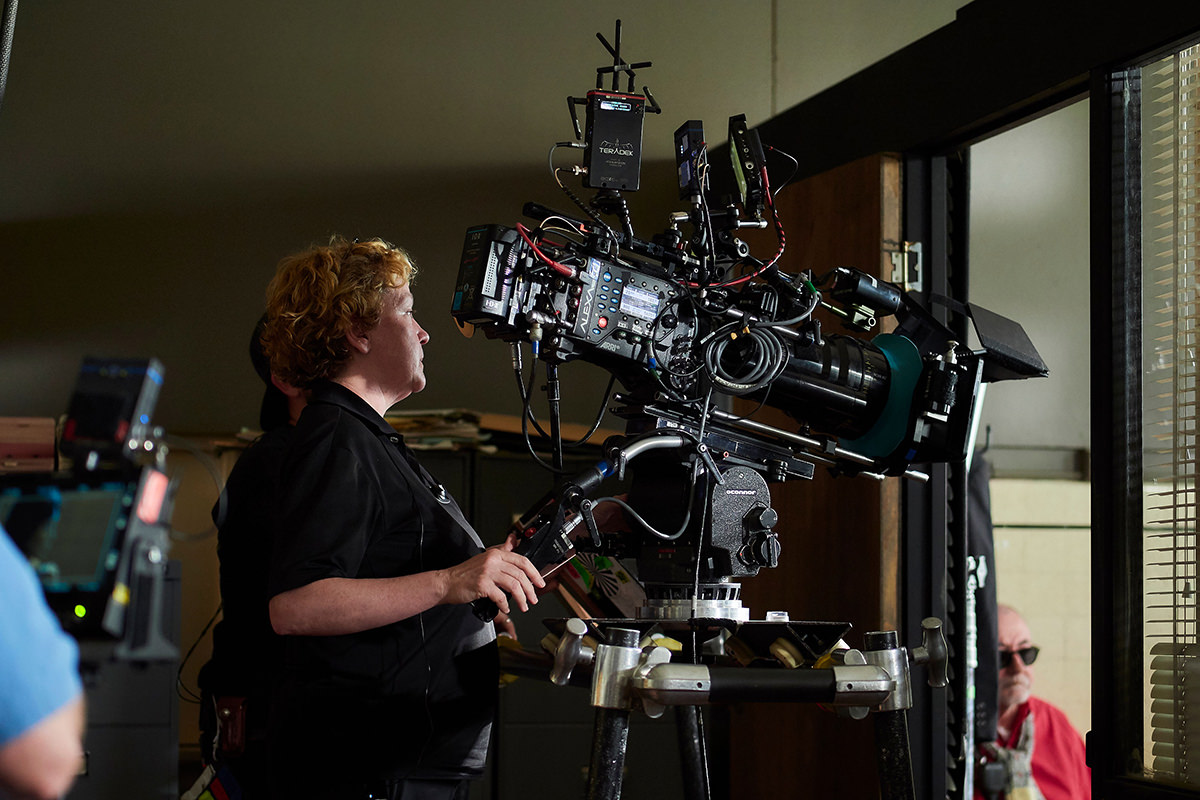 Kathy Chambers on the set of Ms Fisher's MODern Murder Mysteries
Kathy Chambers on the set of Ms Fisher's MODern Murder Mysteries
A spin-off of the popular Miss Fisher’s Murder Mysteries, it’s set in 60s Melbourne and follows the reckless Peregrine Fisher who inherits her famous aunt’s fortune when she goes missing in New Guinea and decides to follow in her footsteps as a private detective. The four telemovies were created for Channel 7 and filmed in Melbourne in the autumn of 2018.
Kathy Chambers ACS: Our show was set in the swinging 60’s. Set up director Fiona Banks and I wanted it to look bright, sunny and on the move. To help achieve that, we used a combination of the 2 XT’s in production mode and the ALEXA Mini ready to go on the Ronin 2. Basically we were a two camera team with three bodies at our disposal. On such a tight schedule this made us incredibly flexible.
I’ve used the ALEXA cameras over many years on Wentworth so I’m very familiar with them. I’ve always enjoyed the images the censor produces. Also the 14 stop dynamic range, what’s not to love!
The Panavision lenses round out a great kit. I love the look of the Primo Primes. I think they really helped with the crisp, clean modern look we were aiming to achieve. My preference is to use the primes on the master and then move onto the zooms to finish off the scene. The wide zoom is really handy when we are up against the clock and there is no time for primes.
Of course that’s just the camera stats… without the work of Production Designer Paul Bangay and Costume Designer Maria Pattison we would have had nothing to shoot! It’s a group effort.
Watch Ms Fisher’s MODern Murder Mysteries on 7Plus.
Cinematographer: Dan Freene ACS
Director: Connor Van Vuuren
Filmed on ARRI ALEXA Mini and shot in 3.2K with Panavision Ultra Speed lenses
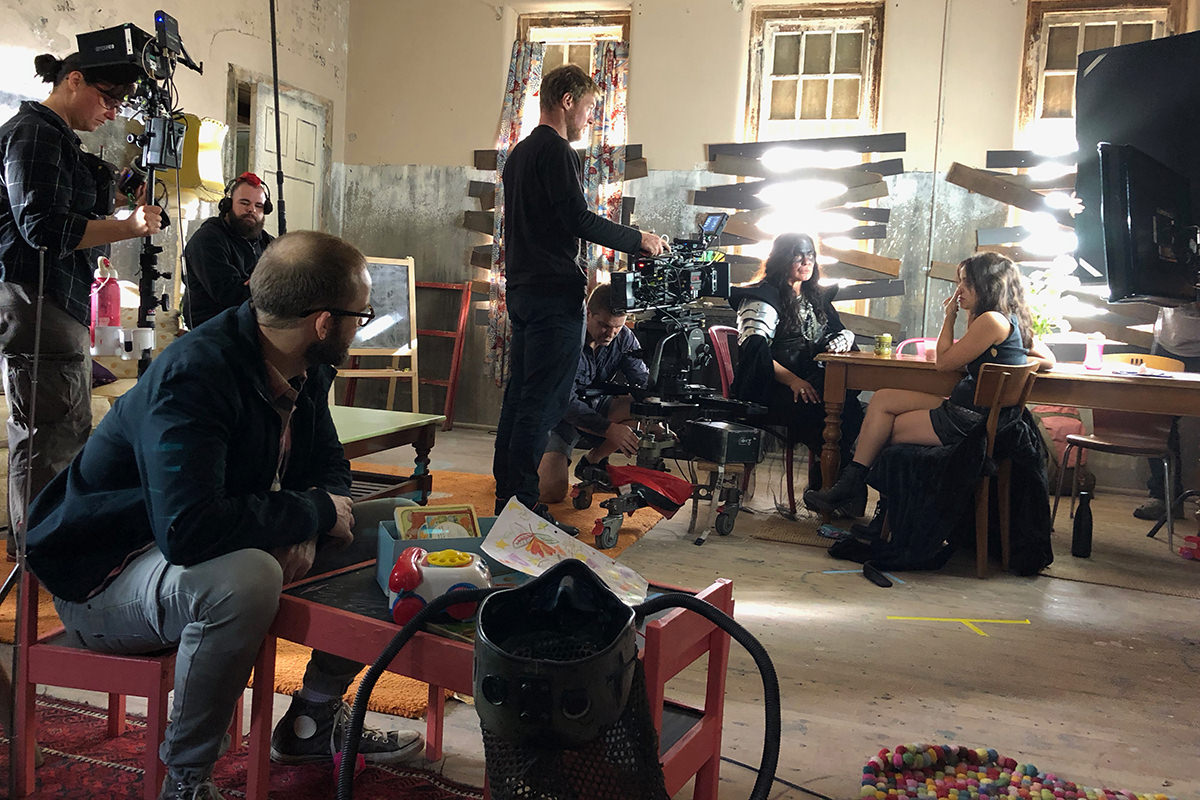 Dan Freene ACS on the set of Over and Out
Dan Freene ACS on the set of Over and Out
A post-apocalyptic online comedy about a regular nuclear family who find their hands full with parenting duties AND battling zombies, mutants, anti-vaxxers and disease. It stars real life husband-and-wife duo Christiaan Van Vuuren (Soul Mates) and Adele Vuko (Skit Box) and also won Best Short Form at the international TV festival Cannes Series in 2019.
Dan Freene ACS: Over and Out was always going to be a mostly handheld production, and our schedule was super tight. The ARRI ALEXA Mini is small and light weight, and great to sling around without breaking my back. For a lot of the coverage, I would shoot the master on a 35mm, then walk in to get single coverage on the same lens. The dynamic range of the ARRI is still probably the most forgiving picture out there, and we were going for a super bold high contrast ratio which the camera handled perfectly. I wanted to give the show a slightly nostalgic feel. I tested the Primo's but found them too sharp for Over and Out, and as I had planned to use a lot of heavy backlight, I was looking for lenses that would flare without the needs for filtration. The Panavision Ultra Primes worked a treat. They were an old original set of Panavision Ultra Speed Lenses from the early 80s.
Watch Over and Out on YouTube now.
Cinematographer: Martin McGrath ACS
Director: Rachel Griffiths
Filmed on the Panasonic Varicam (both the 35 and LT versions) and an ARRI ALEXA Mini with Fujinon zooms and Sigma Primes
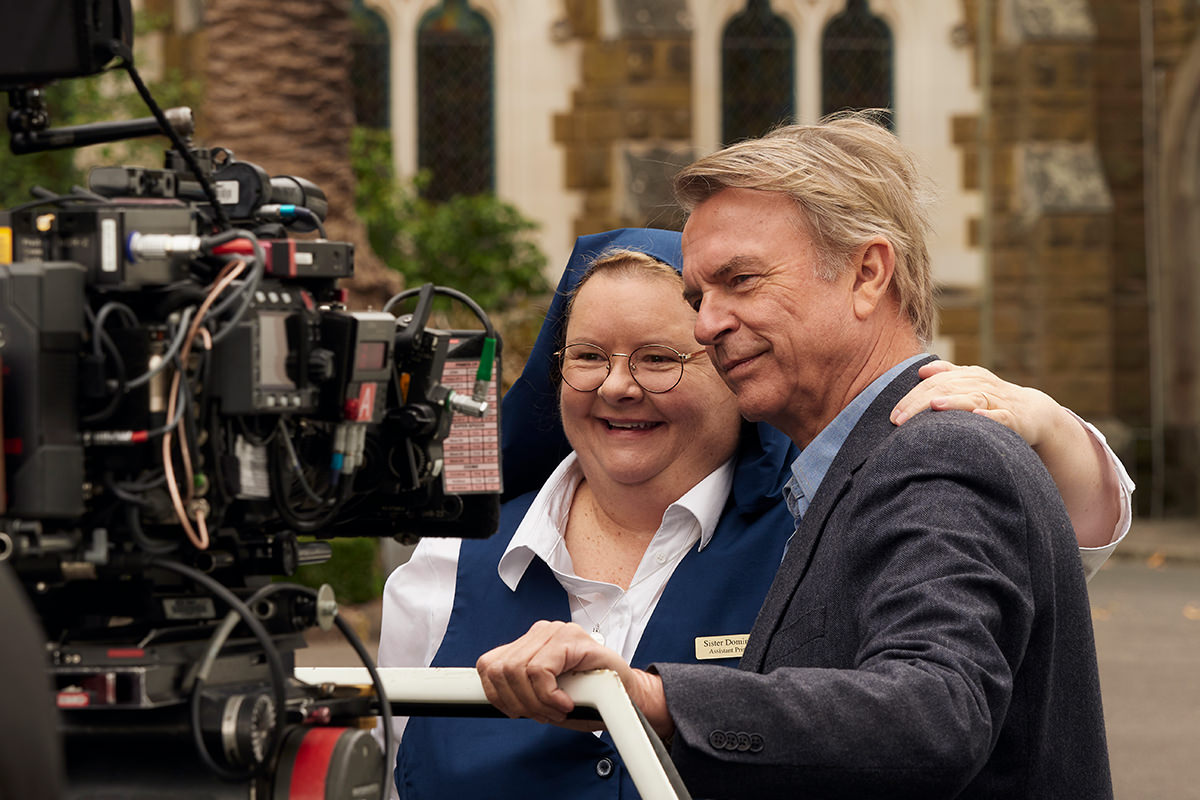 Magda Szubanski and Sam Neill on the set of Ride Like a Girl
Magda Szubanski and Sam Neill on the set of Ride Like a Girl
The highest-grossing local feature at the Australian box office for 2019, Ride Like a Girl told the story of Michelle Payne (played by Teresa Palmer) – the first female jockey to win the Melbourne Cup. The film was the first feature to go from development to production through the Gender Matters program.
Martin ‘Marty’ McGrath ACS: On Ride Like a Girl I chose to use the Panasonic Varicam, both the 35 and LT versions. I fell in love with the camera a couple of years ago and sometimes you just need time with it to get the best out of it. We tested a variety of cameras and found not a big enough difference between those tested to dump one for the other. Everyone has their personal favourite.
The Varicam features a dual speed ISO setting that is very handy. The dynamic range is huge and the 5000 ISO setting option is very handy. So much of Ride Like a Girl was shot in the beautiful countryside of Victoria and on various racetracks. I needed a camera that could capture the subtle blues and greens, the Varicam handled it all really well. Another consideration was the world of jockey silks and the colourful world of fashion and the spectacle that goes with the Melbourne Cup. I wanted to make sure that those scenes felt immediate, vibrant and not overwhelmed by any extreme look. I was always aware that my footage had to intercut with Channel 7’s coverage. I was very pleased with the final natural look.
The action sequences were shot predominantly on an ARRI ALEXA Mini. That choice was mainly about keeping the camera small. The lenses I used were mainly Fujinon zooms, the 19-90mm being my favourite and then a set of Sigma Primes. I am aware of the fashion for lens flares and a vintage prime lens patina but I am glad in the end I did not go down that track for this project, we were running too many cameras and it would have been too difficult to manage. That approach is probably best suited to a single camera project.
I am using a Sony Venice (digital cinema camera) for the next project. I am very keen on the big sensor look and will head into that territory from here on in. Generally speaking we are very well serviced now for cameras - my only complaint is I don’t have enough time to test them all.
Watch Ride Like a Girl on iTunes, Google Play and Bigpond Movies now.
Cinematographer: Murray Lui
Director: Wayne Blair
Filmed on ARRI ALEXA Mini and Drone DJ Inspire 2 (for aerials) with Cooke S4 Primes, Panavision Zoom 11-1 (24mm – 275mm), Panavision zoom 4-1 (17.5mm – 75mm)
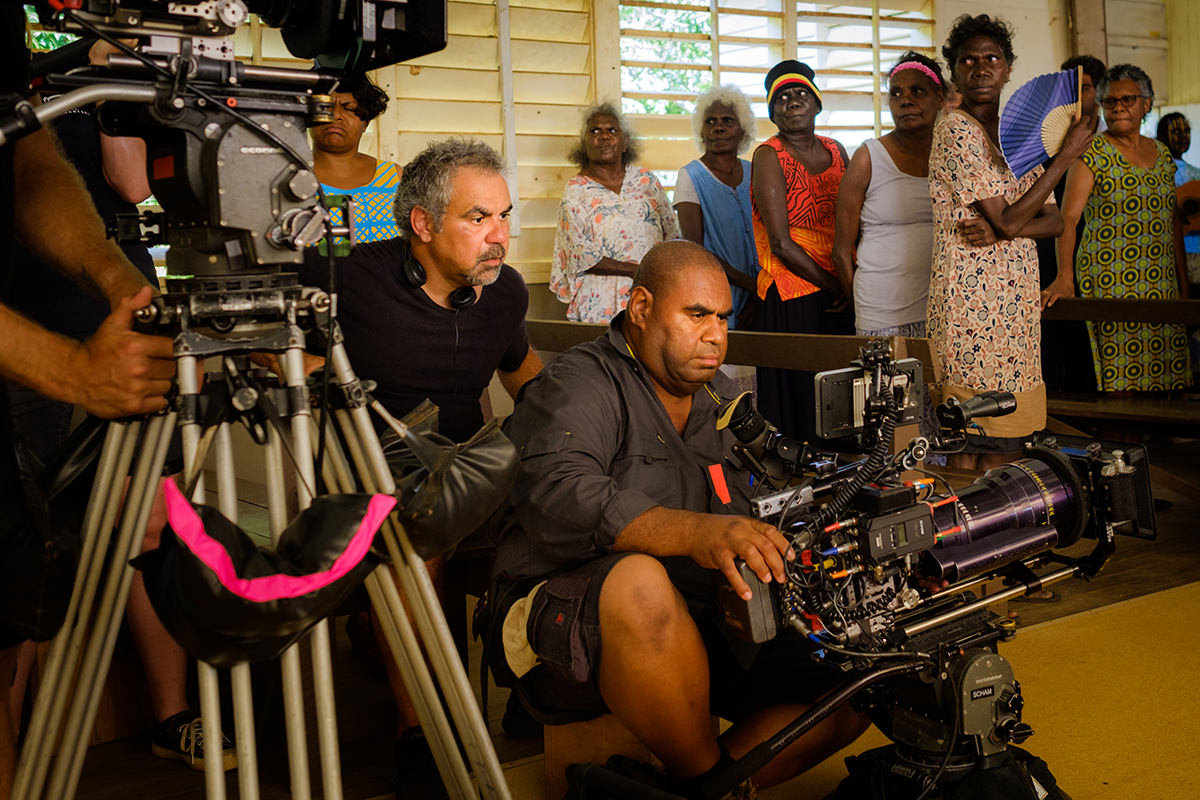 Director Wayne Blair and cinematographer Murray Lui on the set of Top End Wedding
Director Wayne Blair and cinematographer Murray Lui on the set of Top End Wedding
A feature rom-com co-written by and starring Miranda Tapsell, it follows a newly engaged couple Lauren and Ned who have just 10 days to find her mother in the far north of Australia, reunite her parents and pull off the wedding of their dreams. The film took over $5 million at the box office, and is credited with introducing Australians to parts of the far north many had never seen.
Murray Lui: The ALEXA Minis (and ARRI ALEXAs cameras in general) produce great images, have great functional durability and in my mind, are the best choice if you are shooting in remote areas of Australia. With lensing we primarily shot on the Cooke Primes. Within our story, we move from the city to remote regions of Australia and we needed lenses that could be ‘travel hardy’, consistent, and cinematically faithful in colour. The Cookes proved to be the ones to do that.
Buy or rent Top End Wedding on iTunes, Google Play and Bigpond Movies.
Cinematographer: Katie Milwright ACS
Director: Matthew Saville
Filmed on RED Monstro x 2, RED Helium x 1 and a BlackMagic Pocket Cinema Camera 4K with Canon K-35 Rehoused Prime lenses and Kowa Anamorphics
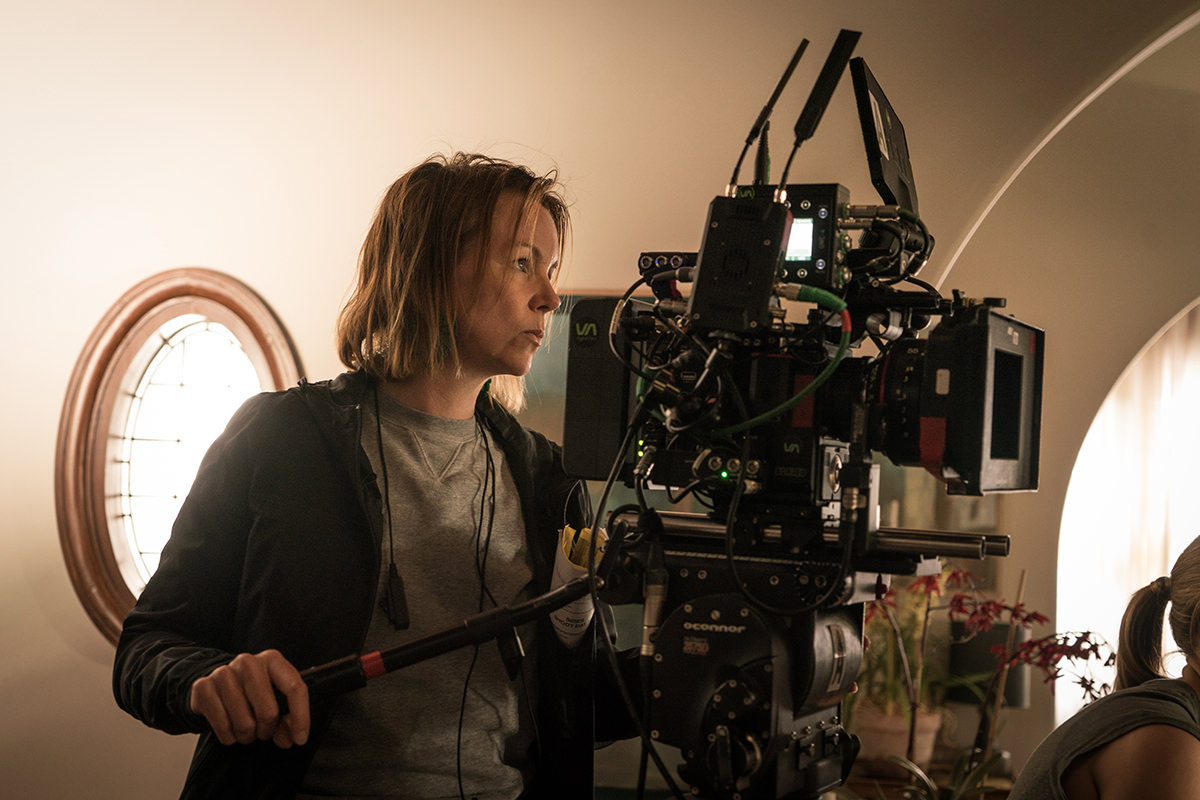 Kate Milwright ACS on the set of Upright
Kate Milwright ACS on the set of Upright
Comedian Tim Minchin (who also co-wrote the eight-part series) stars as a down-and-out musician on a mission to drive his beloved family piano 4,000 miles across one end of Australia to the other, who’s forced to hitch a ride with a smart-mouthed teenager (newcomer Milly Alcock).
Katie Milwright ACS: We used a 2 x RED Monstro for A and B Camera at 6.5K sensor size. Using RED doesn’t seem to be so popular in Australia so that’s one good way to set yourself apart. Secondly I really love the look of it and have had such terrific results with the new RED cameras on past projects. I also wanted to shoot a sensor that was slightly bigger than Super35 size which gives a lovely feel to any portraiture.
We ended shooting up shooting the sensor at 6.5K which is markedly larger than Super35 but not quite the whole res of the camera at 8K. Post in Australia always flips out when you say 8K and I had a lot of convincing to do to shoot above 4K. I also had to be mindful of the focus difficulties if I was to shoot such a super large sensor on a TV schedule – I had incredible focus pullers, but it would increase the difficulty extensively.
The lenses we used for the main storyline were old rehoused Canon K-35s, and for the flashbacks we used Kowa Anamorphics, which we didn’t completely stretch back to normal. I had a limited lens choice with the sensor size and did some testing to find the perfect fit. I loved the bokeh and the close focus of the K-35s and they were slightly imperfect optically in many ways, which I found interesting and lovely: they were an immediate ‘Yes’. The Kowas were a stylistic choice, only used for flashbacks. There’s a whole other story about that.
Watch Upright on Foxtel now.
Further reading
NOT FROM THE CAMERA DEPT?
Here are three key terms that will come up:
- Lens: There is the camera itself and then a lens – also referred to as ‘glass’. They can be spherical or anamorphic and can be zoom or a ‘prime lens’, which has a fixed focal length (meaning you can’t zoom in or out). There are pros and cons to each. They are purchased separately – in fact they can be a completely different brand to the camera. Additionally filters – in conjunction with lenses – can be used to alter the exposure, colour and more. Productions will also typically hire cameras and lens kits.
- ISO: Technically means ‘International Standards Organisation’. The ISO is a number that represents the camera sensor’s sensitivity to light. It’s one of three mechanisms that respond to light (the other two being the camera’s shutter and the lens’ aperture). A higher ISO will have greater sensitivity to light, but can result in more digital noise.
- mm: The focal length of the lens is usually represented in millimetres or ‘mm’. The smaller the number, the shorter the focal length and the wider the field of view. The bigger the number, the longer the focal length and the narrower the field of view.

What to read next
Cinematographer Ari Wegner on her career, process, and the camera choices that informed The Kettering Incident and new feature Lady Macbeth.
28 Jun 2017
Caris Bizzaca